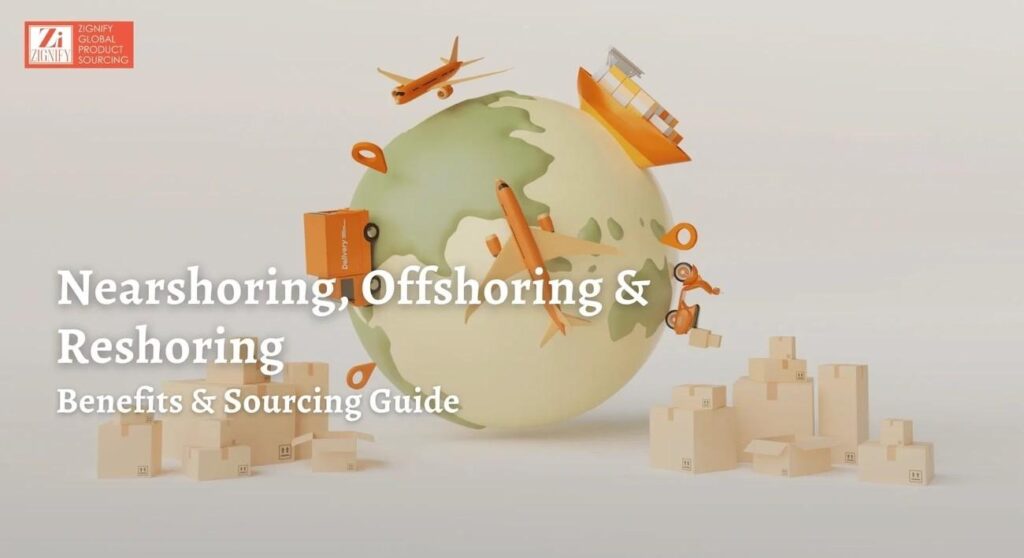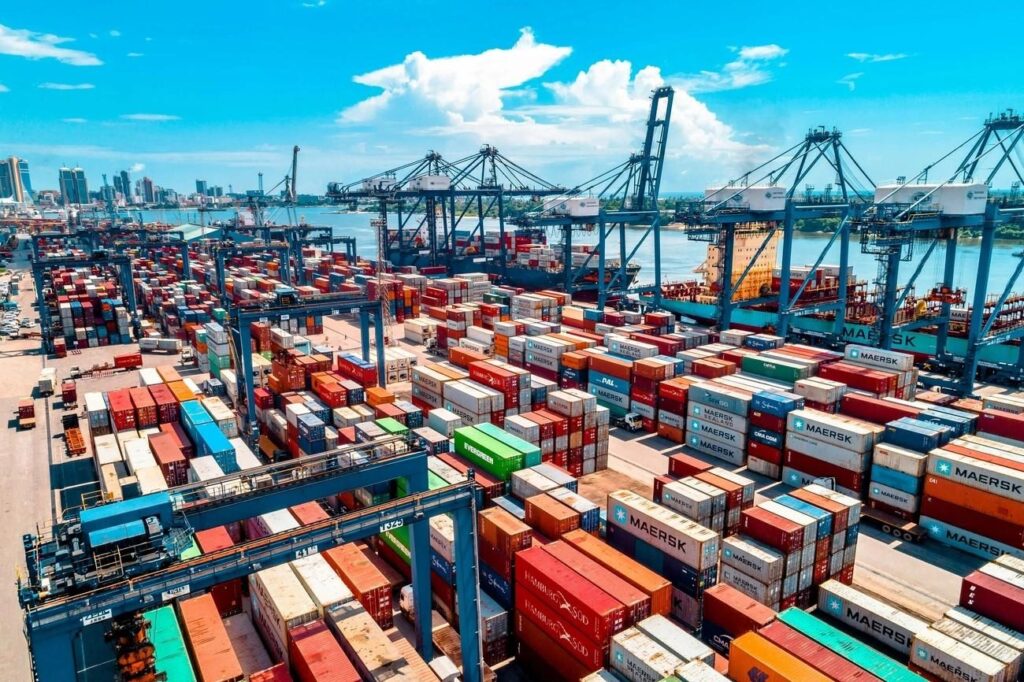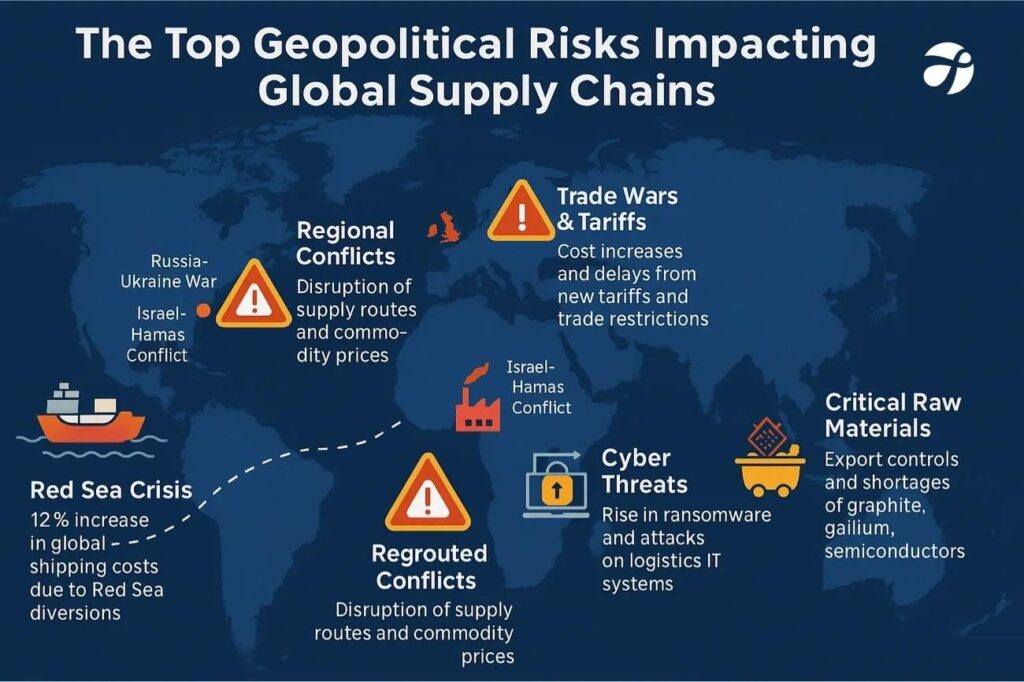How to Build Global Supply Chains That Actually Work: A Step-by-Step Guide
Oct 21, 2025 | By Team SR

The global supply chain crisis has dramatically reshaped international trade, pushing shipping container costs from around $4,000 to as high as $22,000 in recent years. What was once a model of smooth efficiency has revealed itself to be fragile and vulnerable. Many supply chains now operate efficiently but remain easily disrupted by major global events such as pandemics, wars, or natural disasters.
The system faces multiple pressures. During 2021, nearly 90 percent of businesses reported difficulties filling essential positions, creating widespread operational slowdowns. Environmental concerns further complicate the picture, as eight major supply chains now contribute to more than half of global carbon emissions.
Despite these challenges, solutions are within reach. Businesses can build stronger, more adaptable supply networks through digital transformation, diversification, and strategic readiness. The most successful organizations focus on three key priorities: digitization through technologies like artificial intelligence, resilience to recover quickly from disruptions, and sustainability through responsible environmental and social practices.
This article explores practical ways to transform fragile supply chains into flexible, forward-thinking networks capable of thriving in today’s unpredictable world.
Rethinking Global Production Models

Traditional manufacturing used just-in-time (JIT) inventory management for decades. This revolutionary approach emerged in the 1980s among materials requirements planning (MRP) and optimized production technology. Recent global disruptions have exposed major flaws in this once-dominant model.
Why just-in-time is no longer enough
The JIT model makes manufacturers order products from suppliers only after customers place orders. This creates a system that's "efficient but brittle". Companies using JIT couldn't fulfill orders when manufacturing hubs shut down during the pandemic. They simply didn't have enough inventory. This weakness comes from two main problems: supply/demand shocks and too much supplier dependency.
In stark comparison to this common belief, JIT can drive up costs. Smaller production quantities cut per-shipment expenses, but companies lose the cost benefits that come with high-volume production. Companies must now move toward what experts call "risk-adjusted, agile inventory management" - a strategy that prepares for change and adapts quickly.
The case for on-shoring and near-shoring
The manufacturing world is moving away from offshoring. About 94% of companies now plan to invest directly in onshoring or nearshoring. Onshoring (domestic production) and nearshoring (production in neighboring countries) bring several benefits:
- Less transportation bottlenecks and better reliability
- Better quality control through closer monitoring
- No language barriers or time zone issues
- Meeting sustainability goals by cutting carbon footprints
Total Cost of Ownership (TCO) leads many reshoring decisions. Higher domestic labor costs get balanced out by transportation savings, lower inventory needs, and much lower risk. A study of industries shows that high transportation costs in 2021 made reshoring attractive for machinery, consumer appliances, and furniture manufacturing.
How governments are incentivizing local production
Governments actively support domestic manufacturing through big incentives. Manufacturing projects received around $75,000 per employee in incentives in 2023. The federal government provides grants, credits, and loans through programs like CHIPS and the Inflation Reduction Act.
The Build America, Buy America provisions, which started in 2022, have strict requirements. All iron, steel, manufactured products, and construction materials used in eligible federal infrastructure projects must be made in the United States. These rules want to boost domestic manufacturing, protect American jobs, and help federal highway projects benefit from a stronger manufacturing base.
Fixing the Transportation Bottlenecks

RECOMMENDED FOR YOU

How Startups Can Use Indoor Digital Signage to Look Bigger Than They Are
Team SR
Dec 6, 2025
Port congestion stands out as a critical bottleneck in global supply chains. About 8.4% of the worldwide container fleet—roughly 2.65 million TEUs—faces delays due to these bottlenecks. Supply networks feel the ripple effects throughout their operations. Costs rise and schedules fall apart.
Understanding port delays and container shortages
These transportation bottlenecks stem from several key factors:
- Surging trade volumes as e-commerce grows (Germany's market should hit $98.30 billion by 2024)
- Labor shortages that push carriers to hire 18-year-old drivers
- Geopolitical disruptions that force vessels to change routes and create uncertainty
- Container imbalances where empty containers pile up in some regions while others run short
How digital tracking can improve visibility
Live digital tracking has become a must-have for building resilient supply chains. Companies that use these technologies can cut their disruption response time from days to just hours. Research shows that tracking container discharge, pickup availability, and gate-out timing helps businesses make smart decisions. This approach helps them avoid demurrage charges that can get pricey.
The role of maritime informatics in logistics
Maritime informatics—defined as "the application of information systems to increase efficiency, safety, and ecological sustainability"—takes an all-encompassing approach to shipping operations. Port Collaborative Decision Making (PortCDM) shows its value when stakeholders share standardized timestamp data to boost port call efficiency. Digital data streams now serve as the cornerstone of coordination between the many players in global logistics.
Building Resilient Cross-Border Logistics Networks
Supply chain integrity remains a critical risk factor for companies operating internationally, especially when political and regulatory environments change without warning. Companies need an all-encompassing approach that goes beyond basic efficiency to build strong cross-border logistics networks.
Strong global supply chains keep regular business operations running smoothly. Operations can stop completely if a single point fails, which leads to major financial damage and reputation loss. In fact, supply chain disruptions affected almost 80% of organizations during 2023.
Organizations don't become resilient by avoiding geopolitical exposure - they need to build flexibility into their supply networks. This means creating alternative trade routes, broadening supplier networks, and developing quick routing capabilities. A successful cross-border strategy must treat disruption as normal rather than exceptional.
Key resilience strategies include:
- Creating transportation options across truck, rail, and ocean shipping
- Learning about alternative borders and crossing points beyond major gateways
- Using transload operations to add capacity
- Using technology for live visibility and control
- Creating strategic collaborations with customs brokers and freight forwarders
For example, partnering with an experienced freight forwarder China to Canada can make a significant difference in maintaining supply chain efficiency. A dependable logistics partner helps manage customs procedures, optimize shipping routes, and ensure reliable cross-border delivery.
Organizations should invest in transportation management systems that show shipment status in real time. This helps them respond quickly to delays or problems. These capabilities improve operational continuity and help maintain competitive advantage in complex global markets.
Strengthening the Human and Health Infrastructure
The global labor crisis that emerged during COVID-19 reshaped how supply chains and healthcare systems operate. Massive workforce departures—47.8 million Americans in 2021 and another 50.6 million in 2022—exposed deep vulnerabilities and forced organizations to rethink how they attract, train, and retain essential workers.
Here are key lessons and actions that highlight how to strengthen both the human and health sides of global supply chains:
- The pandemic exposed severe gaps in healthcare supply chains. Canada’s healthcare system, for instance, suffered heavily, with seniors in long-term care facilities accounting for 43% of all COVID-19 deaths. Many healthcare workers lacked access to basic protective gear, as 51% could not obtain N95 masks and 25% did not have essential PPE when needed.
- Public health resilience depends on reliable supply chain planning. Hospitals and health agencies must be equipped to manage sudden surges in demand for medical products. When supply chain coordination is not integrated into emergency planning, patient care quality declines and overall system readiness weakens.
- Addressing workforce shortages requires both retraining and technology adoption. About 76% of supply chain leaders face ongoing labor gaps, particularly in transportation (61%) and warehouse operations (56%). Many companies are turning to automation to manage routine tasks, with 54% listing it as their top priority.
Navigating Market and Geopolitical Risks

Market concentration has reached alarming levels in various industries. Four companies now control between 55% and 85% of beef, poultry, and pork processing. Consumers only see an illusion of choice in the market.
How monopolies disrupt supply chains
Monopolistic practices severely affect supply chain resilience. The pandemic shortages revealed how dominant retailers like Walmart pressured suppliers to prioritize their needs. This left independent grocers paying up to 53% higher wholesale prices. Major food companies like Pepsi and Coca-Cola showed their market dominance by raising prices by double digits. Such concentrated market power undermines supply stability significantly.
The impact of trade wars and tariffs
Global commerce patterns have shifted due to trade tensions. Several major trade conflicts stand out:
- U.S.-China confrontation led to export restrictions and company blacklisting
- New tariff systems changed shipping routes and increased costs
- Protectionist policies added to "sticky" inflation
In spite of that, these barriers usually trigger countermeasures that create ripple effects throughout supply networks.
Why semiconductor shortages matter
The automotive industry lost $210 billion in 2021 due to global chip shortages. Governments responded with decisive action. The U.S. approved $52 billion for domestic chip manufacturing. Europe launched a €43 billion initiative to double its market share by 2030.
Building resilience through strategic diplomacy
Diplomatic coordination shows promise as a way forward. The U.S.-European Union Trade and Technology Council created a Secure Supply Chains working group. The U.S. and Mexico work together specifically on semiconductor supply chains through their dedicated working group.
The Future Depends on Smarter Supply Chains
Global supply chains are undergoing one of the most significant transformations in modern history. The past few years have revealed how interconnected and fragile these systems truly are, but they have also shown the remarkable capacity for innovation and adaptation within the logistics world.
The organizations that thrive will be those that treat resilience as a core principle rather than a response to crisis. Embracing digital transparency, diversifying supplier networks, and investing in sustainable practices will not just reduce risks but create long-term competitive strength.
Supply chains are no longer just operational backbones; they are strategic assets that define how businesses grow, adapt, and earn trust in a changing world. The path forward lies in building systems that do more than move goods—they connect economies, protect communities, and prepare for what comes next.


 Follow us
Follow us Follow us
Follow us













